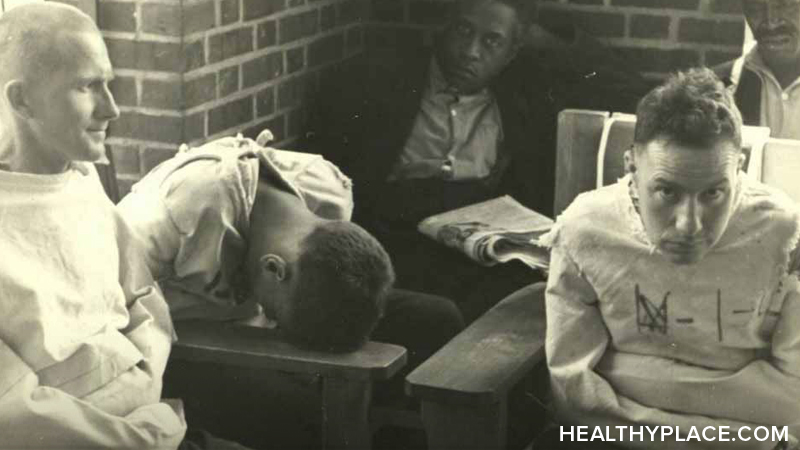History of Schizophrenia

The history of schizophrenia is somewhat debatable as the term “schizophrenia” didn’t come into being until around 1908. What we do know is that forms of “madness” have been noted throughout medical history and likely some of these conditions are what we would recognize as schizophrenia today. In the early days of psychiatry, no distinctions were made between different types of madness.
The term “schizophrenia” literally means a splitting of the mind, which is unfortunate because this gives the impression that schizophrenia is a multiple personality or split personality disorder, which isn’t true. The term schizophrenia was chosen to denote the separation between personality, thinking, memory and perception.
Who Discovered Schizophrenia?
The word “schizophrenia” was coined by Eugen Bleuler, a Swiss psychiatrist but this isn’t when schizophrenia was discovered. It’s thought its predecessor, dementia praecox, was the first medical description of what we think of as modern schizophrenia.1 Bleuler documented schizophrenia’s “positive” and “negative” symptoms – terms we still use today.
Dementia praecox, a term first used in Latin, was discovered, or described, around 1891 by Arnold Pick, a professor of psychiatry at the German branch of Charles University in Prague. This discovery is often attributed to German psychiatrist, Emil Kraepelin, as he popularized the concept. Kraeplin divided dementia praecox into hebephrenia, catatonia and paranoid dementia subtypes, which are similar to the subtypes of schizophrenia classifications seen today.2
Modern History of Schizophrenia
While schizophrenia treatment once consisted of exorcisms and insulin shock treatment, the major breakthrough in the history of schizophrenia treatment came in 1952. That’s when Henri Laborit, a Parisian surgeon, discovered that chlorpromazine (Thorazine, now known as an antipsychotic) effectively treated the symptoms of schizophrenia. This discovery ushered in a time when people with schizophrenia were no longer confined to asylums (or mental hospitals) but could live in the community.
In the 1970s, as growing numbers of people with schizophrenia were being successfully treated with antipsychotic medication, groups and programs began to emerge to support them. Assertive Community Treatment (ACT) was developed to help these individuals and its programs are still in use and considered the “gold standard” for service delivery today. The National Alliance on Mental Illness (NAMI) also came into being in the 1970s to fight for the rights of those with a mental illness.3
Atypical antipsychotics, or second-generation antipsychotics, are now more commonly used to treat schizophrenia as they are thought to have a more tolerable side effect profile than first-generation antipsychotics. Psychosocial therapies are now also used to treat schizophrenia. Psychosocial interventions include:
- Family therapy
- Supported employment
- Skills training
- Cognitive behavioral therapy
- And others
APA Reference
Tracy, N.
(2021, December 20). History of Schizophrenia, HealthyPlace. Retrieved
on 2025, December 27 from https://www.healthyplace.com/thought-disorders/schizophrenia-information/history-of-schizophrenia


